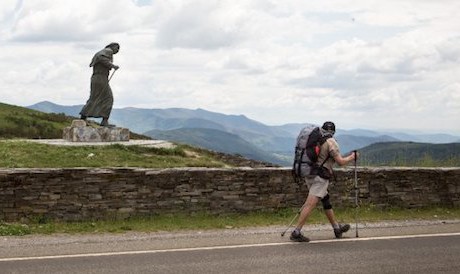Not long ago, only a few people would make the pilgrimage to Santiago de Compostela in Spain.
Now, over 200,000 people a year spend several gruelling weeks along the route.
Traditionalists turn up their noses at the crowds, but the rewards are still vast.
In the Middle Ages, pilgrimages were neither a quest for meaning, nor an opportunity for contemplation, nor an event.
People had real worries and pilgrimages were part of a deal.
On the one hand was the willingness of the faithful to suffer, on the other was God’s capacity for deliverance.
The one walks, the other heals — a transaction based on reciprocity.
Similar to mendicants, pilgrims had no possessions beyond what they carried with them: a walking stick, a small sack of belongings, a gourd full of drinking water and the clothes on their back.
They were filled with reverence and, not uncommonly, a thirst for adventure.
The grave of St. James in Santiago de Compostela has been a pilgrimage site for over 1,000 years.
When times were quiet, only a dozen people would make the effort.
At other times, it would be a couple of thousand.
But the quiet years are over.
More than 200,000 people followed the Way of St. James last year. And this year, those who make money from the steady stream of wayfarers are in a particularly celebratory mood.
Four million copies of the book “I’m Off Then: Losing and Finding Myself on the Camino de Santiago” by German TV celebrity Hape Kerkeling have been sold in Germany, and its impact has been huge: Since its publication in German nine years ago, Germans have made up the largest share of foreigners making the pilgrimage.
Last year, according to church statistics, 16,000 of them turned up in Santiago, a new record. And now, German public television station ARD is making the movie. Continue reading
Source
- Article and image: Spiegel Online
News category: Features.




